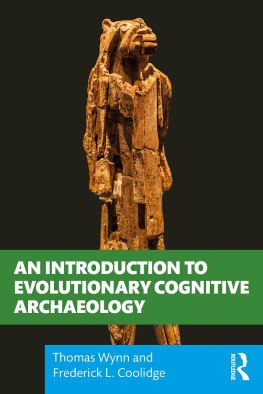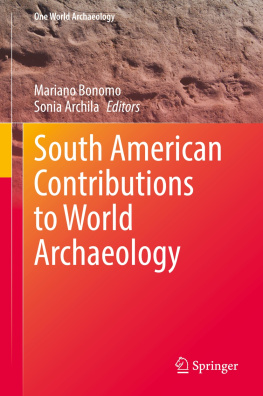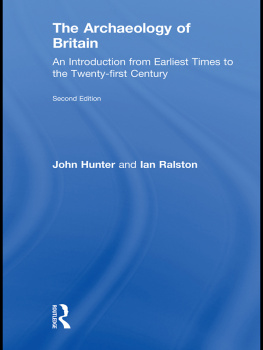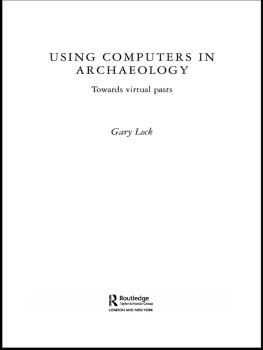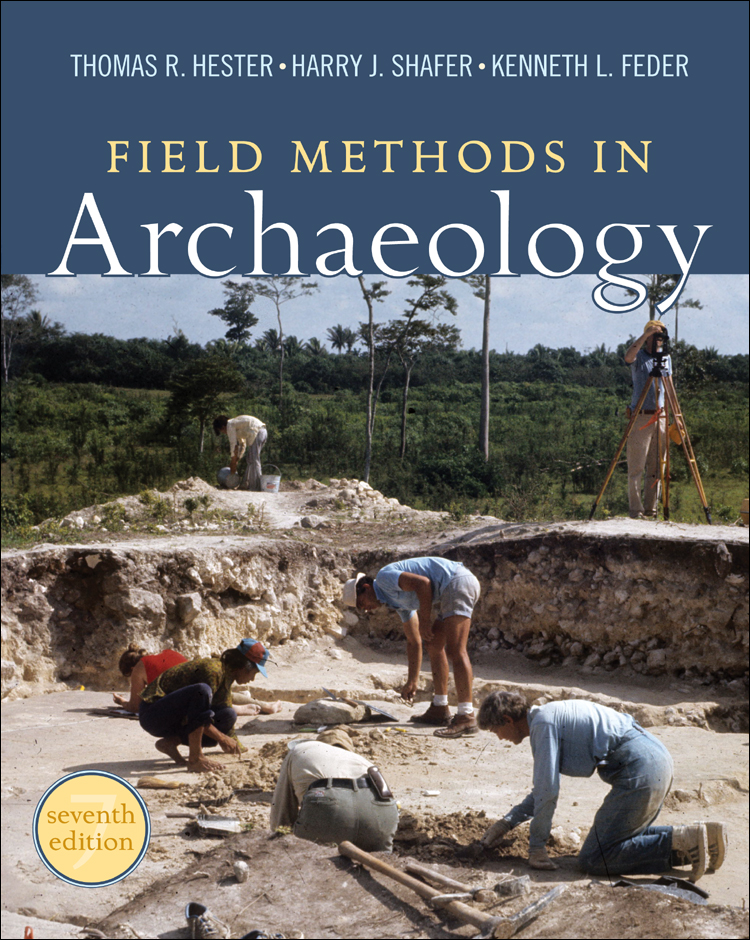Contents
Guide
Page List
i Field Methods in Archaeology
SEVENTH EDITION
Thomas R. Hester
Harry J. Shafer
Kenneth L. Feder

ii First published 2009 by Left Coast Press, Inc.
Published 2016 by Routledge
2 Park Square, Milton Park, Abingdon, Oxon OX14 4RN
711 Third Avenue, New York, NY 10017, USA
Routledge is an imprint of the Taylor & Francis Group, an informa business
Copyright 2009 Taylor & Francis
Previously published by Mayfield Publishers/ McGraw-Hill under ISBN 1-55934-799-6
All rights reserved. No part of this book may be reprinted or reproduced or utilised in any form or by any electronic, mechanical, or other means, now known or hereafter invented, including photocopying and recording, or in any information storage or retrieval system, without permission in writing from the publishers.
Notice:
Product or corporate names may be trademarks or registered trademarks, and are used only for identification and explanation without intent to infringe.
Library of Congress Cataloguing-in-Publication Data:
Hester, Thomas R. 1946
Field methods in archaeology / Thomas R. Hester, Harry J. Shafer, Kenneth L. Feder -- 7th ed.
p. cm.
Includes bibliography, references and index.
ISBN 978-1-59874-428-6
1. Archaeology -- Field work.
I. Shafer, Harry J. II Feder, Kenneth L. III. Title
CC76.H47 1997 96-27313
930.1-- dc20 CIP
ISBN 978-1-59874-428-6 paperback
iii 
CONTENTS

Thomas R. Hester
Harry J. Shafer
Harry J. Shafer
iv
Kenneth L. Feder
Thomas R. Hester
Kenneth L. Feder
v
Thomas R. Hester
Harry J. Shafer
L. Kyle Napton with Elizabeth Anne Greathouse
vi vii
Richard E. W. Adams and Fred Valdez, Jr.
Joseph E Powell, D. Gentry Steele, and Michael B. Collins
Richard G. Holloway
viii
Barry W. Baker, Brian S. Shaffer, and D. Gentry Steele
Thomas R. Hester
ix 


Cluster of Olmec figurines (Offering No. 4), excavated by Robert F. Heizer at La Venta, Tabasco, Mexico, in 1955. Photo courtesy Robert F. Heizer.
This book, appearing now in its seventh edition, is a direct lineal descendant of A Manual for Archaeological Field Methods, edited by the late Professor Robert F. Heizer in 1949. That initial spiral-bound edition had fewer than 100 pages, with chapters written mainly by students, and it was designed to be a field manual for Central California archaeology. It was published by National Press of Millbrae, California, as were several revisions, until 1975 when Mayfield Publishing Company took its place.
The book has gone through several editions, with the first hardcover version published in 1958. Major restructuring was done for the edition published by Heizer and Graham (1967), which became the most widely used field methods book in North America. The sixth edition, by Hester et al. x (1975), further expanded the books scope and coverage and sought to deal with some of the criticisms of the 1967 edition.
The present volume has been extensively reorganized and rewritten. Although Professor Heizer died in 1979, he had given Hester a marked-up copy of the 1975 edition, annotated with errors and with some ideas for its later revisions; a number of these have been incorporated here. Although we have eliminated many of the older and more obscure references for which he had great fondness, we continue to cite selected older references because we feel they are important in giving a sense of history of field methods to beginning students. Heizer always viewed the book, in its later incarnations, not as a manual on how to do archaeology, but rather as a guide to the approaches that archaeologists have used in surveying, excavating, and documenting sites of various kinds.
Thus, we wish to dedicate this seventh edition to the memory of Professor Heizer. He did extensive fieldwork in California, the Great Basin, and Mexico. Perhaps his most challenging fieldwork was at the Olmec site of La Venta in 1955; it was certainly the place where he made his most cherished field discoverya ritual grouping of standing Olmec figurines shown on page xiii. A detailed description of how this feature was discovered and the careful reading of its stratigraphic placement can be found in Drucker et al. (1959:152161).
ACKNOWLEDGMENTS
With a volume of this scope, and with the many people who have contributed to its development, it is literally impossible to express our thanks to each individual. Numerous students and staff members have been of invaluable assistance. In addition, a number of colleagues have aided by providing references, illustrations, and other assistance. These include (alphabetically) Elizabeth Andrews, Stephen L. Black, David L. Carlson, Michael B. Collins, Darrell Creel, E. Mott Davis, Paul Goldberg, John A. Graham, Jessica Johnson, Donald R. Lewis, Robert J. Mallouf, Joseph Michels, Paul Storch, Dee Ann Story, David Hurst Thomas and the American Museum of Natural History, Alston Thoms, David Van Horn, and many members of the staff at the Texas Archeological Research Laboratory, the University of Texas at Austin.
Then, there are our valued collaborators (including some who stuck with us from the 1975 edition), who have contributed their expertise and knowledge to this volume. For some, it must have seemed that their chapters were always returning to them, year after year, for updates required by the incredible pace of archaeological developments. How they remained cheerful and helpful is a mystery, but indeed a credit to their scholarship. The chapters written by these authors reflect just how diverse archaeology has become, the broad parameters within which archaeologists plan and execute fieldwork in the field, and the vast literature that characterizes the discipline at the end of the twentieth century.
There have also been, over the past decade, more than a dozen reviewers of the book, sometimes reading groups of chapters, sometimes confronted with the whole thing. They have offered us much useful advice, and perhaps more important, most have expressed the belief that such a book is indeed necessary. We have tried to address as many of their concerns as possible, and we thank them for their efforts. Among their number are J. M. Adovasio, Mercyhurst College; Mary Beaudry, Boston University; Colin Busby, Basin Research Associates; Richard I. Ford, University of Michigan; Sylvia Gaines, Arizona State University; E. B. Jelks, Illinois State University; Rosemary A. Joyce, University of California, Berkeley; W. Frederick Limp, Arkansas Archeological Survey; Barbara Mills, University of Arizona; Timothy R. Pauketat, University of Oklahoma; Jerome C. Rose, University of Arkansas, Fayetteville; James Schoenwetter, Arizona State University; David Hurst Thomas, American Museum of Natural History; Nicholas Toth, Indiana University; Gail Wagner, University of South Carolina, and Gary S. Webster, Pennsylvania State University.


